Domestic abuse: statistics recorded by the police in Scotland - 2015/16
Characteristics of victims and perpetrators of domestic abuse incidents recorded by the police in Scotland between 2015 and 2016.
This document is part of a collection
3. Main Findings: Incidents of Domestic Abuse in Scotland
Incidents of Domestic Abuse
3.1 In 2015-16 there were 58,104 incidents of domestic abuse recorded by the police in Scotland, a decrease of 3.0% from 2014-15 when 59,882 incidents were recorded.
Over the past five years, the number of incidents of domestic abuse recorded by the police has remained around the 60,000 mark. This follows large rises in recorded incidents between 1999-00 and 2011-12 ( Table 1 & Chart 1).
In 2015-16, 51% (29,906) of domestic abuse incidents led to the recording of at least one crime or offence. The proportion in 2014-15 was 54% (32,569) ( Table 1 & Chart 1). Over the past 10 years, this percentage has fluctuated between 49% and 62%, with no obvious trend.
Chart 1: Incidents of domestic abuse recorded by the police, 2006-07 to 2015-16 *
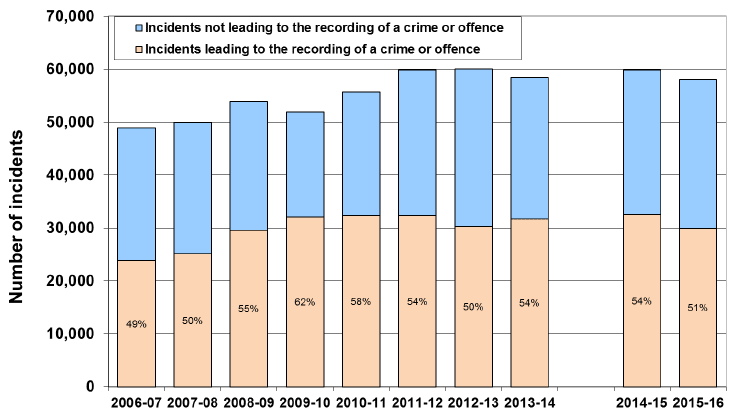
* Chart has been displayed with a gap in the time series to highlight the changes in data collection. See Section 6.4 for more details.
Local Authority Analysis
3.2 Across Scotland, 19 out of 32 local authorities recorded a decrease in the number of incidents of domestic abuse recorded by the police between 2014-15 and 2015-16 ( Table 2).
In 2015-16, the highest percentage of incidents of domestic abuse recorded that resulted in at least one crime or offence also being recorded was Dumfries & Galloway (69%) and Moray (68%).
Incidents of Domestic Abuse per 10,000 Population
3.3 Taking the population of Scotland as at mid-year 2015, there were 108 recorded incidents of domestic abuse per 10,000 population in 2015-16. At a local authority level, Dundee City (160) and West Dunbartonshire (152) recorded the highest incident rates per 10,000 population. Aberdeenshire (51) and East Renfrewshire (53) recorded the lowest rates per 10,000 population ( Table 4 & Chart 3).
Victim & Accused Characteristics
3.4 In 2015-16, females made up the majority (80%) of the victims in incidents of domestic abuse recorded by the police. Where the gender of the victim is known, this percentage increases to 83% if you only consider incidents that resulted in the recording of at least one crime or offence ( Table 10 available online).
Incidents with a female victim and a male accused represented 79% of all incidents of domestic abuse in 2015-16 (where gender information was recorded). This percentage share has fallen from 87% over the last ten years. The proportion of incidents with a male victim and female accused (where gender was recorded) has increased from 11% in 2006-07 to 18% in 2015-16 ( Table 5 & Chart 4).
Chart 2: Percentage of incidents of domestic abuse recorded by the police that resulted in at least one crime or offence being recorded, by local authority, 2015-16
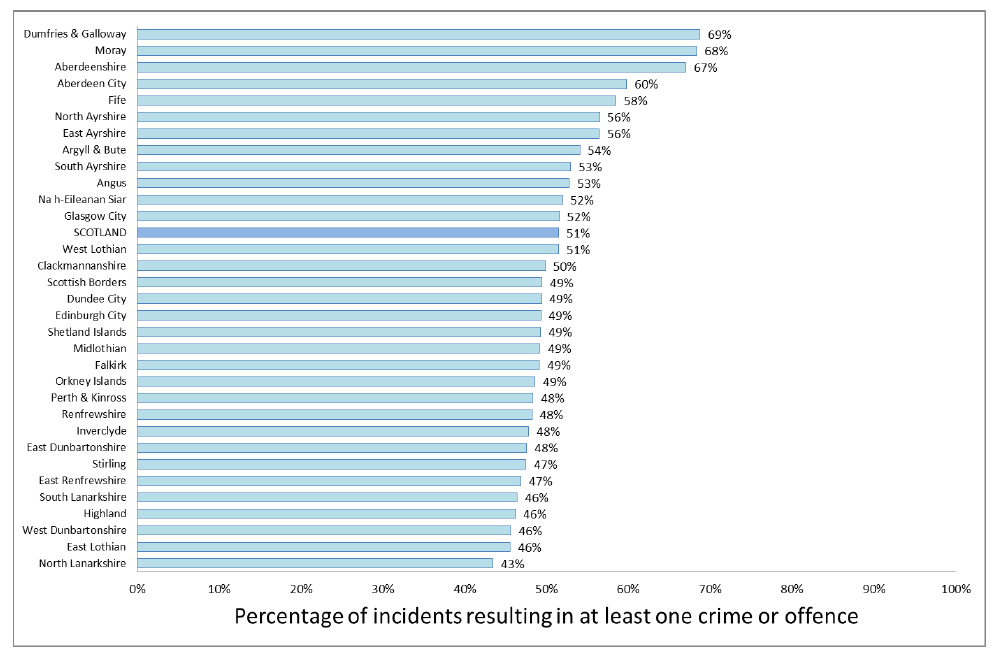
Chart 3: Incidents of domestic abuse recorded by the police per 10,000 population 1, by local authority, 2015-16
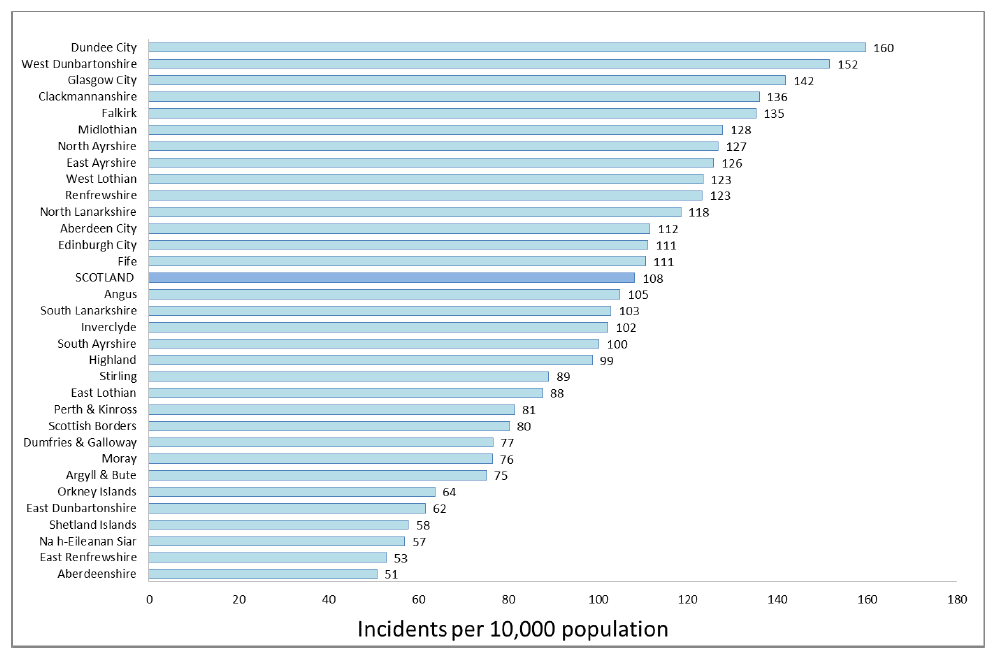
1. Population estimates are at mid-year 2015 published by the National Records of Scotland ( http://www.nrscotland.gov.uk/statistics-and-data/statistics/statistics-by-theme/population/population-estimates/mid-year-population-estimates)
Chart 4: Gender of victim and accused, where known, 2006-07 to 2015-16
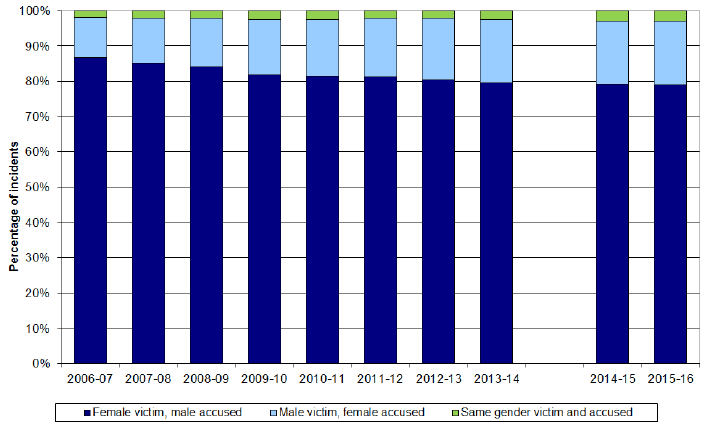
* Chart has been displayed with a gap in the time series to highlight the changes in data collection. See Section 6.4 for more details.
* Chart only displays incidents where gender of victim and accused is known. See Section 6.13 for more details on missing data.
3.5 In 2015-16, the 26 to 30 year old age group had the highest rate per 10,000 population for both victims (283 incidents recorded per 10,000 population) and those accused (272 incidents recorded per 10,000 population) ( Table 6 & Table 7).
In 2015-16, female victims aged 26 to 30 had the highest rate (463) of incidents of domestic abuse recorded by the police per 10,000 population. Among male victims, the highest rate of incidents of domestic abuse recorded per 10,000 population, was for those aged 31 to 35 years, where the rate was 106 incidents recorded per 10,000 population ( Table 6 & Chart 5).
In 2015-16, those aged 26 to 30 years showed the highest rate of domestic abuse among both those females accused (100 incidents recorded per 10,000 population) and those males accused (447 incidents recorded per 10,000 population) ( Table 7 & Chart 5).
Chart 5: Gender of victim and accused, where known, 2015-16
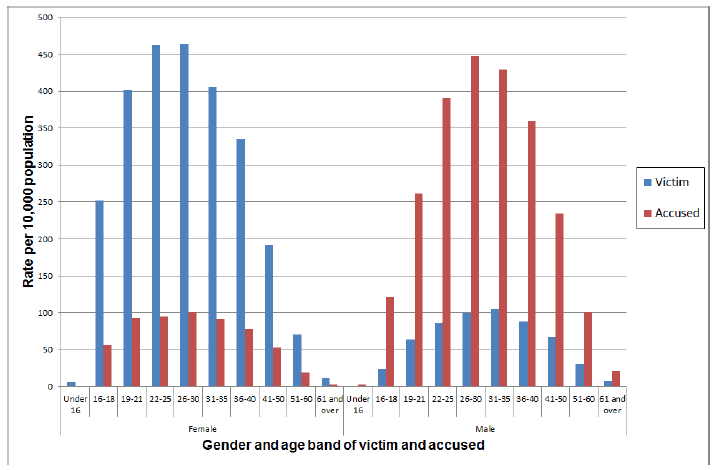
* Data for 2015-16 had a number of incidents with missing age and gender, see Section 6.13 for more detail. As a result, comparisons should not be made to previous years data.
Victim & Accused Repeat Analysis
3.6 The Interim Vulnerable Persons Database ( iVPD) database (referred to in Paragraph 2.5 above) enables the identification of a victim or accused that has previously been entered into the system for domestic abuse. A victim or accused can appear multiple times in the iVPD in any one year, each classified as a separate incident.
The iVPD was rolled out during 2013-14 and any repeat incidents will therefore have been recorded since the system was rolled-out across the then 14 police divisions. As a result, all victims and accused highlighted in the repeat categories below will have been involved in an incident of domestic abuse either in 2013-14 (part year depending on divisional roll-out), 2014-15 or 2015-16.
Out of the 58,104 incidents of domestic abuse recorded by the police in 2015-16, there were 24,404 incidents where both the victim and the accused had previously been recorded in an incident of domestic abuse. In 25,602 incidents, neither the victim or accused were found on the iVPD database and in the remaining 8,098 incidents there was either a mix of results for the victim and accused ( i.e. one was a repeat, and one was not a repeat) or some data was unknown ( Table 8 & Chart 6).
Chart 6: Incidents of domestic abuse recorded by the police, by repeat victim/accused analysis, 2015-16
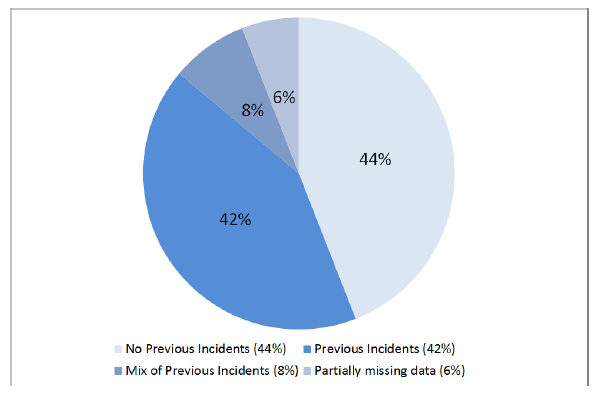
Location of Incidents
3.7 In 2015-16, 43% of incidents of domestic abuse occurred within the victim's own home. A further 22% occurred within a joint home and 22% occurred in either the accused's home or an 'other dwelling'. The remaining 13% of incidents occurred in the Street (6%), Licensed Premises (1%) or an 'Other' location (6%) ( Table 9 & Chart 7).
Chart 7: Incidents of domestic abuse recorded by the police, by location, 2015-16
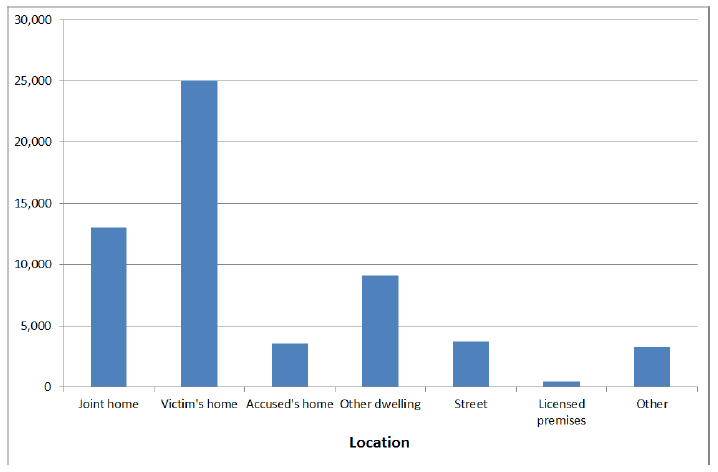
Day/Month of Occurrence
3.8 The following section is based on the date the incident of domestic abuse occurred, rather than when it was recorded by the police.
Incidents of domestic abuse recorded by the police in Scotland are more likely to occur at the weekend with 36% of incidents in 2015-16 occurring on a Saturday or a Sunday. The remaining 64% is spread fairly evenly from Monday to Friday. This pattern has been consistent over the past 10 years ( Table 12 & Chart 8).
Chart 8: Incidents of domestic abuse recorded by the police, by day of the week incident occurred, 2015-16
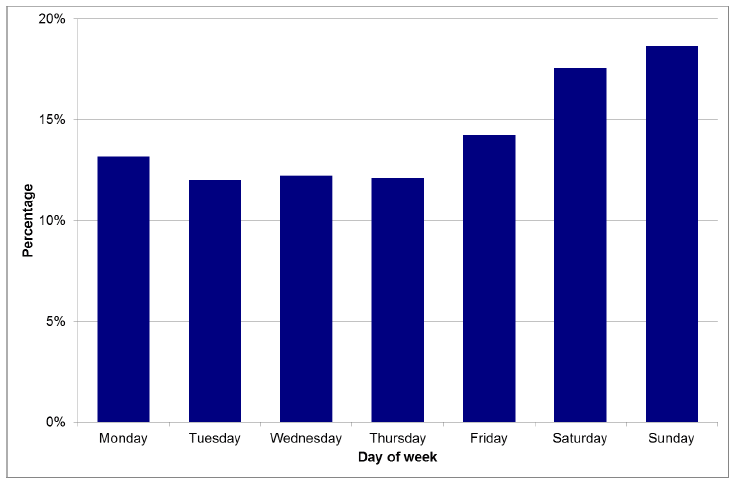
When looking at the month that incidents of domestic abuse recorded by the police occurred in 2015-16, no clear pattern emerges from the data, with incidents reasonably spread out across the year ( Table 13).
Tables for Day/Month along with the Additional Tables 10-13 are available online: http://www.gov.scot/Topics/Statistics/Browse/Crime-Justice/PubDomesticAbuse
Contact
There is a problem
Thanks for your feedback